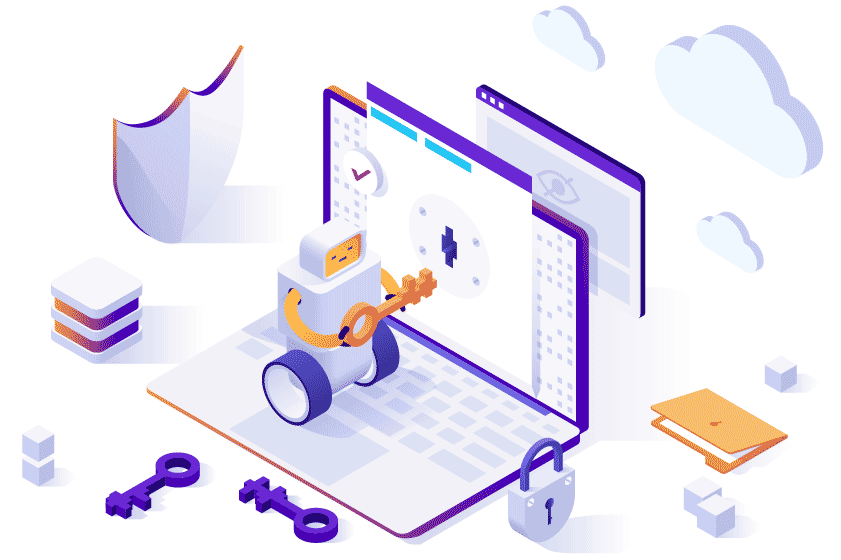They’re judged by how efficiently and safely every possession and piece of furniture arrives at its final destination. An experienced mover knows the importance of careful planning and organizing as well as communicating throughout. It can be a useful metaphor to understand data migration.
In this article we’ll cover the reasons companies undertake a migration, preparing data for the move, and three common migration strategies.
Reasons to migrate
Ask a dozen people why they made their last household move and you’ll get a dozen answers: Downsizing, upsizing, moving in with roommates, and relocating all entail different levels of planning. Companies have different reasons for migrating data which may require different migration strategies. Common reasons for a migration include:
- Moving to the cloud – Cloud migrations have accelerated in the past year, in large part because of the need to support secure remote work during the pandemic.
- Mergers and acquisitions – M&A activity has begun to accelerate, with high-stakes migrations usually capping off a fairly intense IT project. These migrations need to be planned carefully to assure a positive experience as companies are combined.
- Consolidating or decoupling systems – As organizations evolve, they’ll sometimes find it necessary to combine or segregate data for IT management purposes. This could be based on region or subsidiary, for example.
- Moving to a new platform – The large number of companies adopting Microsoft Teams has resulted in migrations to take advantage of Teams’ robust collaboration environment.
- Saving money – As IT organizations look for ways to contribute to the bottom line, many are finding opportunities to lower expenses by shifting to new platforms. For example, BitTitan is seeing more companies move off of GoDaddy to Microsoft 365 as a cost saving move.
- Security – The recent news about on-premises Exchange vulnerabilities being exploited by bad actors has renewed the urgency to migrate to the security of Exchange Online.
Whatever the reason or level of urgency, every migration requires a strategy, thoughtful planning, and a detailed migration checklist. Let’s take a look at data handling strategies and then migration options you’ll want to consider depending on the scenario.
Preparing data for the move
The concept of performing a data migration may seem fairly basic: Pick up everything from point A and move it to point B. But this is rather like calling a moving company, opening the door to your house, and telling them to move everything. Anyone who’s ever done this finds out that the moving company will literally move everything, including the contents of your wastepaper baskets. That means you have the job of sorting through it all when you get to your new house. This is what a lift-and-shift migration looks like.
A lift-and-shift migration may be the only viable strategy when there’s limited time or when the workload is relatively small. But just like the whole-house move, it can create complications on the backend. And, just as a moving company will charge for the weight and volume of all items packed in their truck, a lift-and-shift migration may end up unnecessarily costing more.
Let’s go back to that household that needs to be moved. With some time and planning, the family can go through their things and get rid of what they no longer need. They plan a yard sale, make donations, and take trips to the dump. When everything arrives in their new home, unpacking is easier and they don’t have to find storage space for things they don’t need. In data migration terms, this is a clean-and-shift.
The clean-and-shift migration strategy has long been considered best practice because it results in a cleaner, more efficient migration as well as a potential for lowering data storage costs. It also leads to a more organized environment that allows users to be more productive because they have better access to their data.
IT teams are starting to use Voleer assessments from BitTitan in the planning phases of a migration, allowing them identify content that can be archived or purged. This content is sometimes referred to as ROT: redundant, obsolete, or trivial content. Once it’s identified, you can work with application or database owners to decide how to dispose of it. In some cases, ROT can even be a liability if the company is storing compliance documents for longer than required by law.
Common strategies for migrations
As you plan your migration and determine which workloads will be moved, there are different strategies to consider. Again, this depends on the scenario. These common strategies will entail different migration workflows:
- Single pass migration – This involves moving everything at once, usually over a weekend. Keep in mind that this doesn’t mean everything moves. In fact, a well-organized cleanup prior to migration will streamline the project. Benefits of a single pass strategy are its cost-effectiveness and simplicity. Potential drawbacks include the inability to test workloads prior to cut-over and the possibility that not all data will be available when work resumes. This strategy is not recommended for large or complex migrations.
- Pre-stage migration – This is a multi-pass migration strategy in which the majority of data is moved prior to cut-over. Often older items and archives are moved in advance of a cut-over weekend when more recent data is then brought over. This allows users to immediately be productive when they return to work. Pre-stage migrations are recommended for larger and more complex projects and they do require advance planning to assure success.
- Quick switch migration – With the quick switch strategy, recent data is moved first and archives follow later. This is a way to speed a migration and get users onto their new system quickly with their most important data. When executing a quick switch, it’s important to remind users that not all their data will be available at time of cut-over.
Continuing our household move analogy, it’s easy to see how a different migration strategy would be appropriate depending on the situation. The quick switch, for example, is like driving frequently-used items to new house across town while the moving company loads everything else. Deciding which strategy to choose is the result of careful planning.
Keys to migration success
There’s a lot to think about when the need arises to execute a migration. In fact, the migration itself often comes at the tail end of strategy, pre-work, and preparation stages. However, there are two ingredients that are key to any successful migration: Planning and communications.
Careful planning can make a difference in multiple ways. Planning the right migration strategy will help increase efficiency and decrease the risk of failure. Even a partial failure will impact end users who rely on access to systems and data for their productivity. Planning can also help reduce costs and data storage requirements. While it may not seem that adding a planning phase to your project timeline will save time, the time you save on back-end clean up could well be worth it.
Communication throughout a migration project is equally important. Maintaining open connections across the project team and with data and application owners will make sure nothing is missed. You’ll also want to make sure users understand their role and know what to expect before, during, and after the migration. When all goes well behind the scenes, it may look like nothing big is happening – and that’s the way it should be.
Let BitTitan help you migrate
MigrationWiz doesn’t just assure a faster, more streamlined migration, we at BitTitan want to make sure your entire project is a success. That’s why we have the most extensive knowledge base available to guide you, including detailed guides, videos, and webinars. We also offer Voleer assessments that provide insights before, during, and after the migration.
Ready to get started with MigrationWiz? Check out our licenses.


